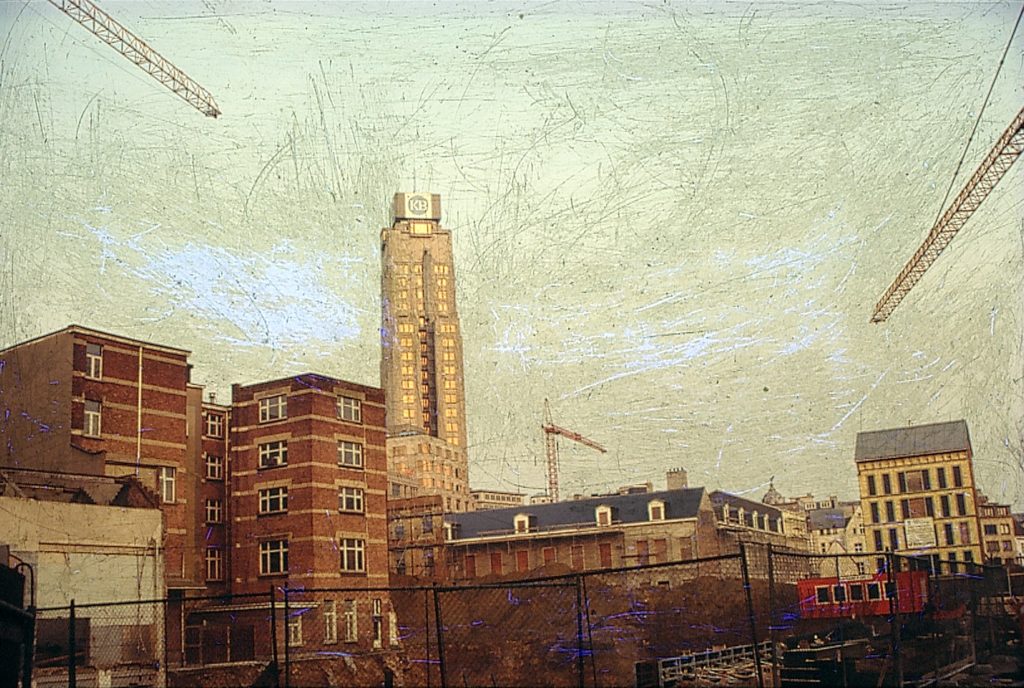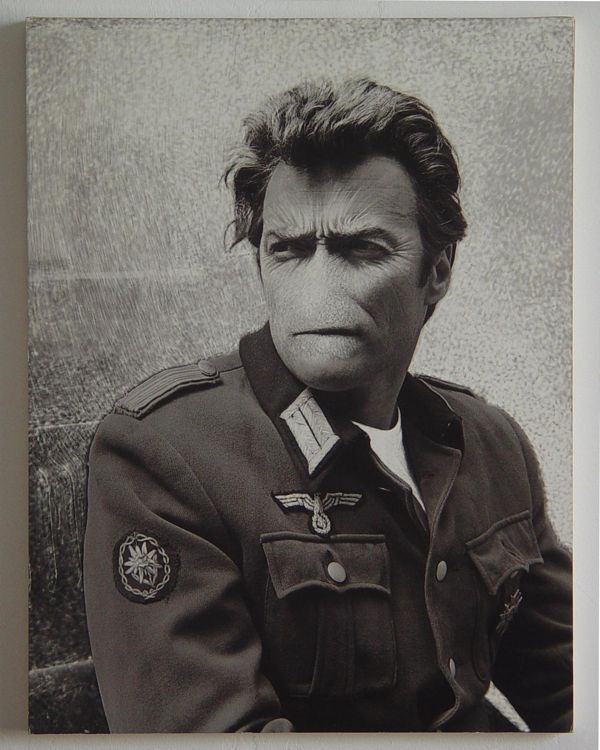Stefano Arienti
Through a repetitive and almost maniacal process of manipulation, Stefano Arienti transforms commonplace objects of everyday life, including telephone books, comic strips, train schedules, and posters, into sculptures that, maintaining the fragile and ephemeral appearance of the medium employed and demonstrate the artist’s interest in the communicative potential implicit in widely disseminated images belonging to popular culture. It is precisely the images that are most popular, in that they are broadly disseminated and thus more recognizable, that present an occasion for a completely personal reworking. Using small gestures, such as folding the pages of a book, obliterating parts of a poster, or tracing over an outline and preserving only a few aspects, the artist intervenes specifically with the immediate recognizability of the icon, creating a perceptual dislocation in the viewer and attenuating the power of the image to communicate.
In Clint, 1994–95, following one of his most common practices, Arienti creates an intervention by erasing parts of a poster of the actor Clint Eastwood, partially distorting the original image. By transforming a well-known movie personality into a subject with a completely different appearance, the face disturbingly disfigured, Arienti utilizes the entire expressive power of the image, revealing the weaknesses and insecurities of contemporary society.
Chimica organica (Organic Chemistry), 1988, takes as its starting point an old university textbook, the pages of which have been folded and stapled to form a long snake-like form. Positioned in different ways, depending on the exhibition space, this anthropomorphic sculpture continually changes its shape to adapt to the space it occupies, in an almost Darwinian process. The work’s playful appearance contrasts with the methodical and destructive process inflicted by the artist on the book.
In his focus on the methods used to create art, Arienti acknowledges the influence of Arte Povera and Process Art, and especially the work of Alighiero Boetti.
In Senza titolo (Untitled), 1991–92, the process by which Arienti has manipulated the thirty slide images that make up the work is even more evident.
Intervening directly on the slides with scratches, holes, and burns, he has totally transformed the preexisting images.
City views, flowers, still lifes, and photographs from Arienti’s most private and personal life are methodically destroyed by the artist almost tortured through a modus operandi that, while preserving the violence of the gesture, still retains the delicacy and intimacy characteristic of all his work.
[COB]
Stefano Arienti’s works originate from the appropriation of existing images that the artist collects, catalogs and then reworks using a wide variety of manipulation processes. Punching, erasing, tracing, scratching, covering are just among the actions performed by the artist. His broad methodology in turn produces further images and new meanings, returning stories that have memory, time and feelings as protagonists. Cartoline (Postcards), 1990–91, is made engraving on polystyrene plates selected details taken from reproductions of works of art, monuments, landscapes as well as using postcards or greeting cards as sources. The collection thus obtained contradicts traditional genre hierarchies. By choosing polystyrene–a fragile material yet used to protect and pack delicate items–the artist also opens the work to a further relation with time and ephemerality.
[MB]



